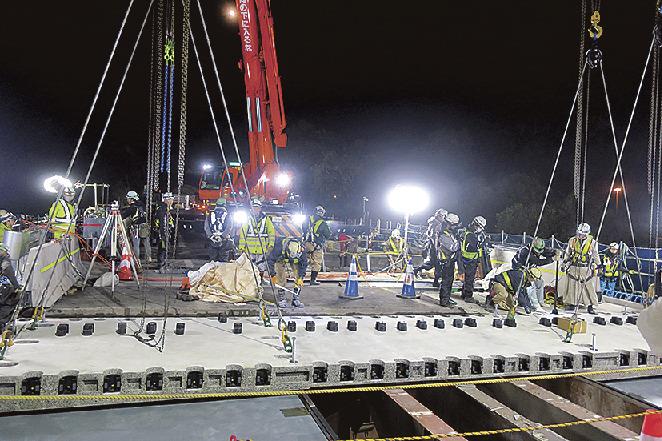The Central Nippon Expressway branch in Tokyo is actively applying rapid construction technology in the renovation of the Seikenji Bridge (Shimizu Ward, Shizuoka City), spanning the Tomei Expressway (Fuji Smart IC - Shimizu JCT). For the first time at the Central Japan Expressway Company, we implemented night traffic closures and used prefabricated floor panels (PCa) and easy-to-install mechanical joints. Temporary steel floor panels will be installed until new floors are replaced to minimize impact on traffic. The branch opened the scene to the press on the 15th.

Kiyomiji Bridge, being renovated at a rapid pace (Courtesy of Central Nippon Expressway Branch in Tokyo)
Seikenji Bridge is located in Okitsu Seikenji Town and was opened in April 1968. There are connecting tunnels and bridges in the front and back parts of the bridge, built to intersect with the Tokaido Shinkansen. The bridge has a length of 258 meters (upward), the upper structure consists of 3-span continuous steel box beams and simple composite steel plate beams. The 55-year-old bridge had deteriorated after years of heavy traffic and fatigue cracks were found in 279 locations.
To ensure the rehabilitation work proceeds, a 12-hour night road closure will be implemented. After removing the old floor slabs, temporary steel floor slabs will be installed to reduce the impact on traffic. Since then, work has been underway to replace the new floor slab. The floor slab is 12.1 meters long and 2.43 meters wide. It weighs 21.6 tons and is installed using a 160-ton truck crane.
To join PCa sheets together in a short time, we applied a new technology called the cotter sheet method, which is based on cotter joints. This reduces work time for poured-in-place concrete, helping to prevent process delays caused by rain and snow. We have also applied a process control system to visualize progress using large screens and mobile devices.
Construction period is from July 1, 2021 to June 9, 2025. Progress is about 16%. YCE is in charge of the renovation design and Nishimatsu Construction/Kyokuto Kowa JV is in charge of construction. A representative from the branch office expressed hope to the contractor: “We have strict conditions to complete the work within the time limit, but we hope that the work will be completed without any accident and safety is our top priority.” ''






